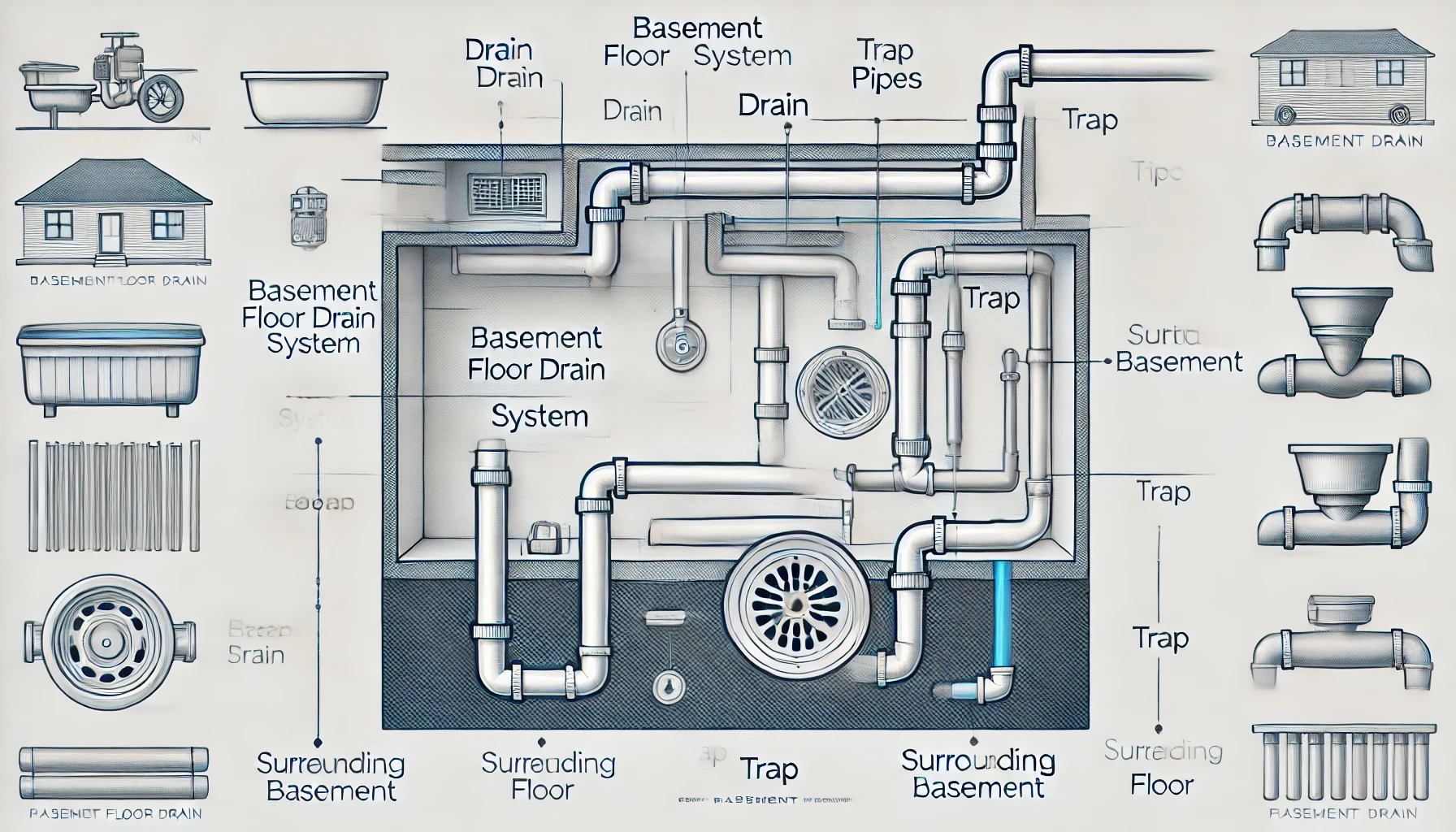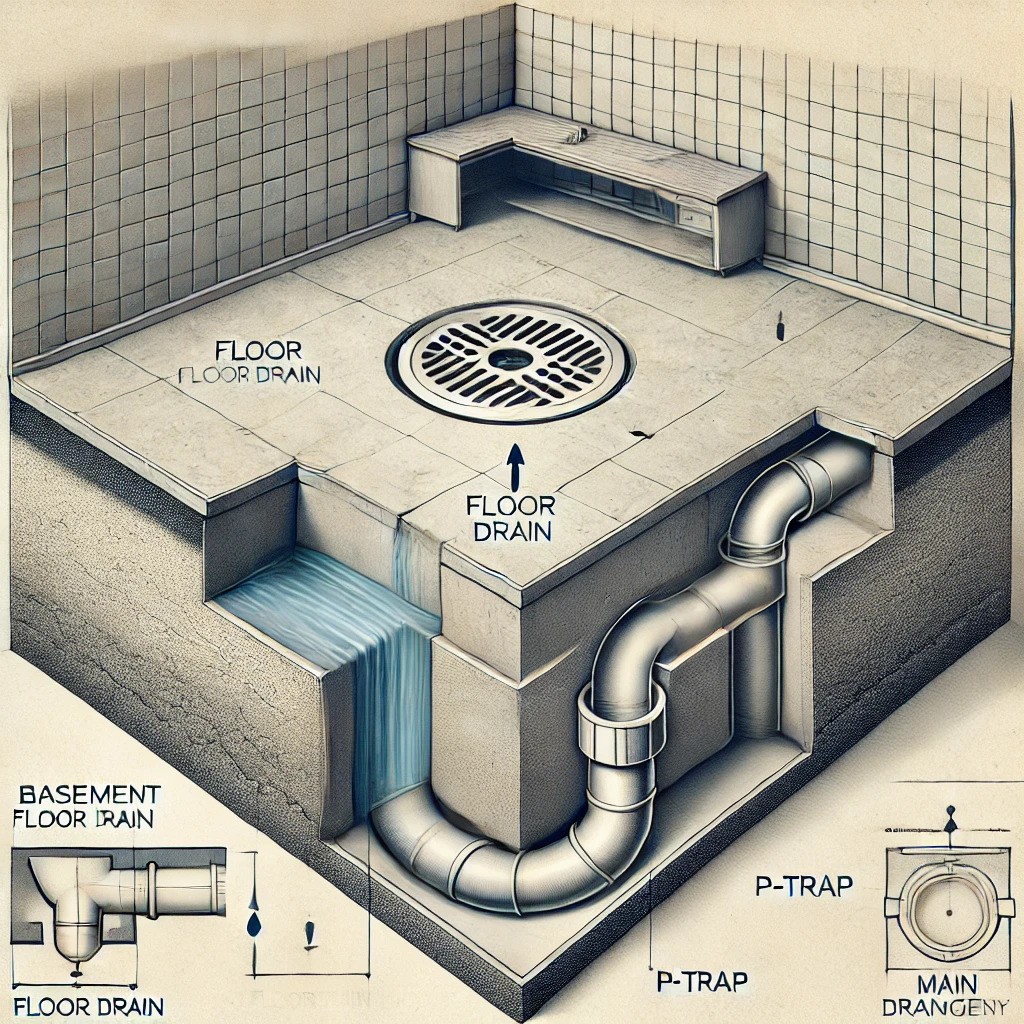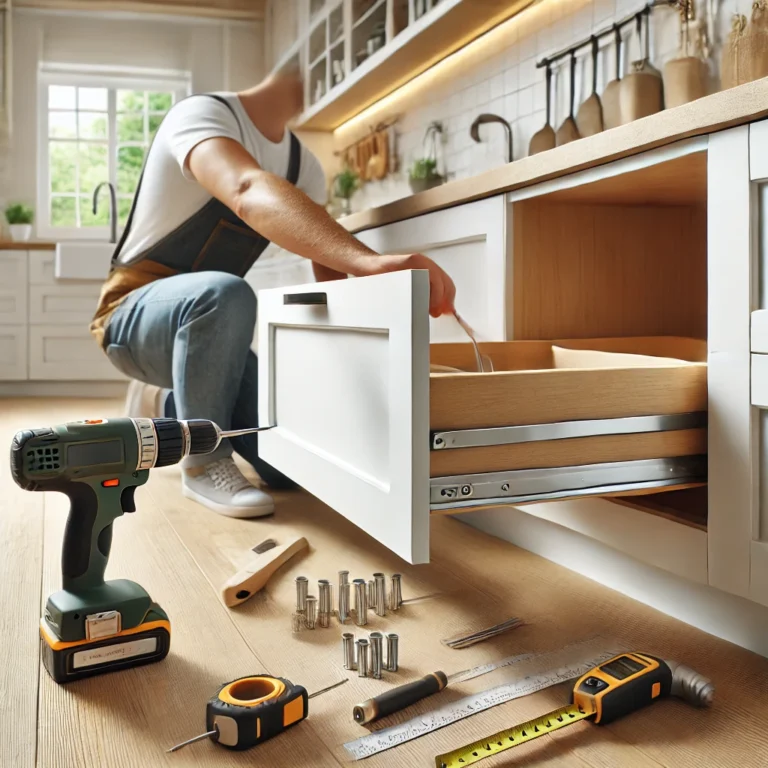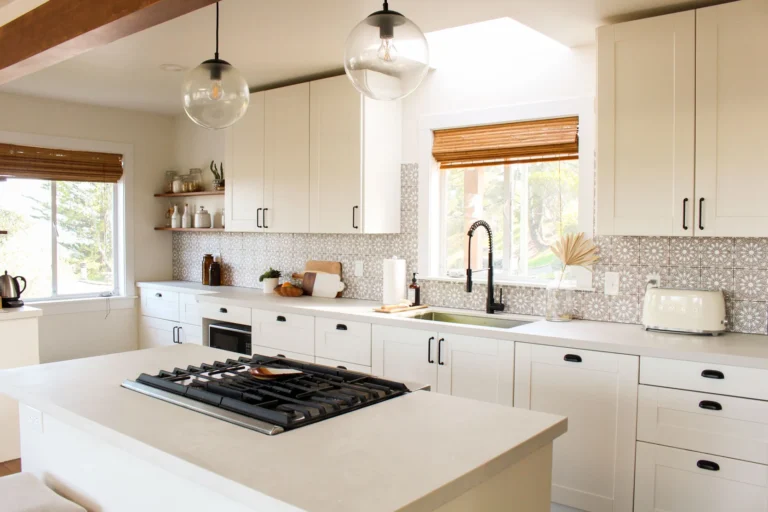Basement Floor Drain Diagrams: Types, Installation & Troubleshooting

Introduction to Basement Floor Drain Diagrams
Basement floor drains are an essential part of maintaining a dry and safe space in your home. These drains help manage excess water, especially in areas prone to moisture accumulation or flooding. A basement floor drain diagram provides a clear visualization of how water flows through your basement plumbing system, including the components involved and their connections. Whether you’re facing a clogged drain or planning to install a new system, understanding the layout and functionality of a floor drain is crucial.
What Is a Basement Floor Drain?
A basement floor drain is a plumbing fixture installed in the lowest part of a basement to manage water drainage. It serves as a critical component for preventing flooding, managing condensation, and channeling wastewater to appropriate disposal systems. When planning or budgeting for these installations, tools like a Basement Foundation Cost Calculator can be invaluable for estimating expenses and ensuring cost-effective solutions. The design typically involves:
- Drain Grate: Protects the system from debris.
- P-Trap: Prevents sewer gases from entering the home.
- Outlet Pipe: Directs water to the main sewer line or a sump pump system.
Understanding the components and layout is essential for homeowners aiming to troubleshoot issues or plan renovations.
Old House Basement Floor Drain Diagram
Older homes often feature simpler and less efficient drainage systems compared to modern constructions. These systems may lack key components like P-traps, making them more prone to odor issues and water backup. Addressing these issues often ties into the Cost to Waterproof a Basement, as upgrading drainage systems can be a crucial step in effective waterproofing.
Key Features of Old House Basement Floor Drains:
- Simplified Design: Often consists of a grate and a straight pipe leading to the sewer.
- Absence of Modern Traps: May lack a P-trap, increasing the risk of sewer gas.
- Shallow Drainage: Limited capacity for managing large volumes of water.
Challenges:
- Higher likelihood of clogs due to debris accumulation.
- Difficulty in retrofitting modern components.
Modern homeowners often upgrade these systems by adding traps or connecting the drain to sump pumps.
Cast Iron Basement Floor Drain Diagram
Cast iron floor drains are common in older buildings and industrial setups. Known for their durability, these drains are designed to withstand heavy loads and resist corrosion over time.
Components of Cast Iron Floor Drains:
- Drain Grate: Heavy-duty, ideal for high-traffic areas.
- Main Body: Made from cast iron for longevity.
- P-Trap: Typically integrated, though older models may lack this feature.
- Outlet Pipe: Connects to the building’s plumbing system.
Advantages:
- Exceptional durability.
- Suitable for areas with heavy water flow.
Disadvantages:
- Prone to rust if not maintained.
- Difficult to modify due to its rigid structure.
Clogged Basement Floor Drain Diagram
Clogs are a common issue with basement floor drains, leading to water backup and potential flooding. A clogged drain diagram typically highlights areas prone to obstruction, such as the grate, P-trap, or outlet pipe.
Causes of Clogs:
- Debris Accumulation: Dirt, hair, and small objects can block the drain.
- Sediment Buildup: Over time, sediment can collect in the trap or pipe.
- Tree Roots: Roots infiltrating the plumbing system can cause blockages.
Solutions:
- Use a plumber’s snake or auger to clear blockages.
- Flush the system with a mixture of hot water and baking soda.
- For severe issues, consult a professional plumber.
Preventive Measures:
- Regular cleaning of the grate and basin.
- Installing a drain cover to minimize debris entry.
- Periodic inspection and maintenance.
Basement Floor Drain Plumbing Diagram

Modern basement floor drains often include advanced plumbing features to enhance functionality and reduce risks.
Typical Layout:
- Grate: Covers the drain opening to block large debris.
- Drain Basin: Collects water and allows sediment to settle.
- P-Trap: Essential for odor control.
- Cleanout Access: Simplifies maintenance and clog removal.
- Connection to Sewer or Sump Pump: Ensures proper water disposal.
Benefits of Modern Designs:
- Better odor control.
- Enhanced water management capabilities.
- Easier maintenance due to cleanout ports.
Troubleshooting Common Basement Floor Drain Issues
Problem: Water Backup
- Cause: Clog in the drain or sewer line.
- Solution: Inspect and clear the obstruction.
Problem: Sewer Odor
- Cause: Dry P-trap or missing trap.
- Solution: Pour water into the drain to refill the trap.
Problem: Slow Drainage
- Cause: Partial blockage in the pipe.
- Solution: Use a drain cleaner or call a plumber.
Problem: Flooding
- Cause: Overwhelmed system during heavy rainfall.
- Solution: Install a sump pump or backwater valve.
Steps to Maintain a Basement Floor Drain
Proper maintenance of a basement floor drain ensures its functionality and prevents costly repairs. Follow these detailed steps to keep your system in optimal condition:
- Regular Cleaning of the Great and Basin:
- Remove the drain grate and clear any visible debris, such as leaves, dirt, or hair.
- Use a small brush to scrub the drain basin and remove sediment buildup.
- Flush the Drain with Hot Water:
- Pour a bucket of hot water down the drain monthly to dissolve grease and wash away light debris.
- Add baking soda and vinegar for a natural cleaning solution. Let it sit for 15 minutes before flushing it with hot water.
- Inspect and Maintain the P-Trap:
- Check the P-trap for clogs or standing water to ensure it functions properly.
- If the P-trap is dry, pour water into the drain to prevent sewer gases from entering your home.
- Install a Drain Cover:
- Use a fine mesh drain cover to minimize the entry of debris and reduce the risk of clogs.
- Use a Plumber’s Snake or Auger:
- For minor blockages, insert a plumber’s snake into the drain and rotate it to break up obstructions.
- Clean the snake after use to prevent residue buildup.
- Check for Damage:
- Inspect the drain’s components, including the grate, basin, and outlet pipe, for signs of wear, cracks, or rust.
- Replace damaged parts promptly to avoid leaks or further issues.
- Professional Inspection and Maintenance:
- Schedule annual inspections by a licensed plumber to ensure the entire drainage system is in good condition.
- Professionals can detect hidden issues, such as tree root intrusion or pipe misalignment.
- Preventive Measures During Heavy Rainfall:
- Use a sump pump to handle excess water during storms.
- Install a backwater valve to prevent sewage backup into the basement.
- Monitor for Unusual Signs:
- Keep an eye on water levels, odors, or slow drainage as these may indicate potential problems.
- Address issues promptly to avoid costly repairs or basement flooding.
By adhering to these maintenance steps, you can ensure the longevity and efficiency of your basement floor drain, protecting your home from water damage and unpleasant odors.
Why Basement Floor Drains Matter
A properly functioning basement floor drain is essential for:
- Flood Prevention: Protects against water damage during storms.
- Health and Safety: Prevents mold growth and odors.
- Property Value: Well-maintained plumbing systems enhance resale value.
Conclusion
Understanding basement floor drain diagrams—from old house designs to modern plumbing setups—empowers homeowners to maintain and upgrade their systems effectively. Whether dealing with a cast iron setup, troubleshooting a clog, or figuring out how to get water out of the basement, knowledge of these systems can prevent costly repairs and ensure a safe, dry basement environment.
By taking proactive measures, such as regular maintenance and addressing issues promptly, you can extend the life of your basement floor drain and enjoy a trouble-free drainage system for years to come.






